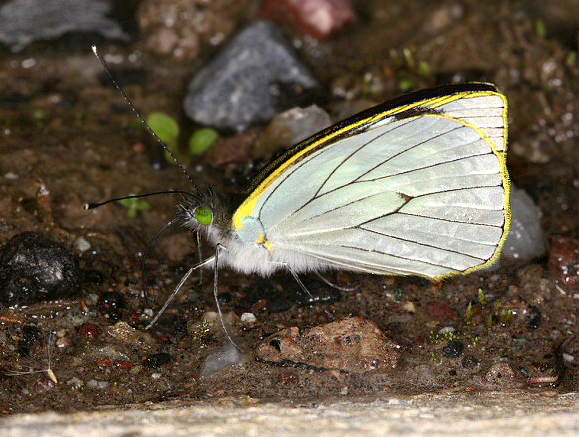 Leptophobia penthica, Ecuador – Tony Hoare
Leptophobia penthica, Ecuador – Tony Hoare
Introduction
In the neotropical region there are a total of 192 representatives of the subfamily Pierinae.The genus Leptophobia comprises of 20 currently known species. Three of these have only recently been discovered ( 2000-2003 ) and are as yet unnamed.All the species have black markings on the upperside, which vary in extent from species to species – philoma for example has very broad black borders, with the ground colour restricted to the base of the wings and a small white apical patch. The underside hindwings are yellow in caesia, dull brown in cinerea, bright reflective silver in penthica, and a silky greenish white in eleone.
All Leptophobia are high altitude species, and are variously distributed from Costa Rica to Bolivia and Argentina.Leptophobia penthica is found from Colombia and Venezuela to Bolivia. There are 9 subspecies.
Habitats
This is a cloudforest species found in the vicinity of streams and small rivers at altitudes of between about 800-2600 metres.
Lifecycle
I have no data regarding penthica but other Leptophobia species are known to use Capparidaceae, Brassicaceae and Tropaeolaceae as larval foodplants. These plants contain mustard oils so it seems likely that the larvae would be noxious to birds, and that these properties are transmitted to the adult butterflies.
The eggs are spindle-shaped, yellowish in colour, and laid either singly or in clusters of up to 20, according to species. The caterpillars are green, sometimes with blue or orange markings, and are slightly hairy. They live gregariously in groups of mixed instars. It is interesting also to note that according to DeVries the larvae are able to walk on the surface film of water.
Adult behaviour
The butterflies are usually encountered singly in the vicinity of streams and waterfalls. They fly low over the ground with a rapid erratic zigzag flight. Males can be seen imbibing mineralised moisture from road surfaces and the edges of mountain streams.
Both sexes visit Lantana, Impatiens, Nasturtium and various other flowers for nectar.
